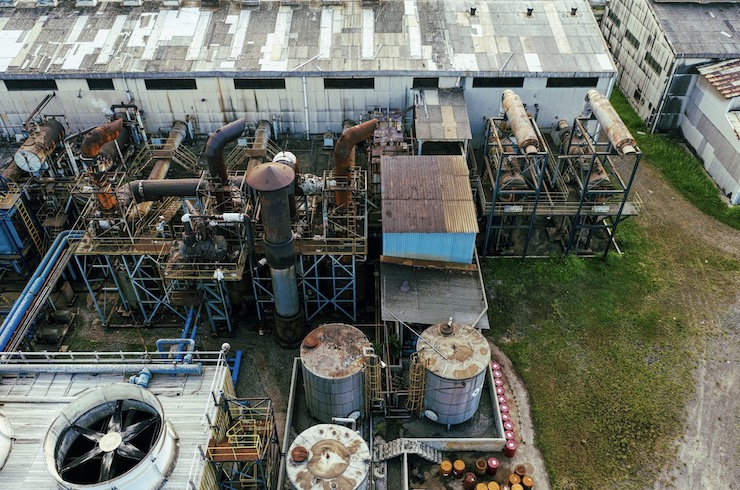Should Drones Enjoy Free Rein to Document Hazardous Waste Incidents?

Should governments and corporations – and the FAA – allow drones to fly freely over hazardous waste spills to document the full extent of the damage? Or are there legitimate grounds for limiting public disclosure? That issue is being put to the test in Kansas in the aftermath of the worst oil spills in the history of the Keystone Pipeline– and indeed, one of the worst oil spills in America in recent years.
The spill occurred early last December when 14,000 barrels of crude oil from a portion of the Keystone pipeline suddenly began flowing into Mill Creek outside the town of Washington located in northern Kansas. Even now, the precise cause of the spill remains unknown. To the consternation of TC Energy, the pipeline’s operator, drones operated by private flyers and by news organizations began buzzing the area and managed to capture the first images of the spill and its aftermath. In response, the company lobbied the FAA to establish a no-fly zone for drones over the entire area while its workers sought to repair the damage. The ostensible purpose? To prevent drone fliers from “”interfering” with the remediation effort. The FAA, it appears, readily complied.
Members of the Sierra Club environmental group feared the worst – a cover-up of the disaster – but initially took a wait-and-see attitude – in effect, giving TC Energy the benefit of the doubt to conduct its remediation effort unimpeded. But with the repair work completed, TC Energy insisted on maintaining the no-fly restrictions, even though the pipeline was once again fully functioning, further limiting public disclosure.
Sierra and other environmental groups fear that TC Energy doesn’t want the public to know what happened at Mill Creek – which turned pitch black after the spill – and why – and may be covering up the extent of the environmental damage, with the concurrence of the FAA as well as Kansas officialdom.
In an interview with reporters from the Topeka Capital Journal last week, TC officials defended the ongoing no-fly restrictions, saying that the company is “committed to being transparent and to providing access to media when it is safe to do so.” However, officials failed to give any indication when reporters might obtain access to the spill site.
Zach Pistora, a lobbyist for the Kansas chapter of the Sierra Club, said TC Energy was stonewalling disclosure of major issues related to the spill, saying his organization “has been at the mercy of (the U.S. Freedom of Information Act, or FOIA) and gratuitous postings by the company” to try to obtain vital information on the health and environmental consequences of the spill. Instead of providing that information voluntarily, TC Energy has forced Sierra to file FOIA requests for company filings with the federal government, stalling their timely release.
“It’s in [TC Energy’s] interest to keep this out of sight and out of mind,” Pistora said.
The type of crude oil carried by the pipeline is particularly difficult to clean, Sierra officials say. One obvious issue is whether the spill has contaminated the drinking water of Kansas residents, and its effects on local wildlife. TC Energy officials have declared flatly that the spill was contained by a dam four miles from the spill site. The dam, and its filtering system, has eliminated the threat of drinking water contamination, the company insists
But the Kansas Department of Health and Environment (KDHE) isn’t so sure. Its assessors found toxic chemicals from the spill in water downstream from the dam. A KDHE spokesman told the media that the contamination levels appeared to be within safe levels of consumption for humans – but they did exceed safe levels for animals. Some deceased animal carcasses and fish have already been recovered and removed to a lab for further examination. The outcome of these assessments is still pending.
TC officials have yet to disclose to federal regulators the full extent of the damage from the spill, based on their own investigations. And now, more than seven months later, the precise cause of the leak remains unknown. Are other areas of the vast Keystone pipeline – running from Alberta, Canada through six U.S. states all the way south to Texas — vulnerable to damage that could cause additional costly spills? Amazingly. given the stakes – and the enormous controversy that has greeted the pipeline from the beginning – no one seems to know. Or if they do, they aren’t saying.
Official opposition to drone surveillance of the oil spill is especially painful since the company lacked the forethought to employ drones on the front end to help detect the possibility of a spill. Inspection of pipelines is a specialty of a number of major drone companies, including Parrot Analfi, Autel Robotics, and Skydio, to name just a few. Not only can drones detect structural weakness and fissures more readily than conventional methods, they can also map the extent of a spill faster and more accurately, limiting the damage and the extent of the clean-up. Drones can also deliver oil spill dispersants over the affected area, containing the area affected.
Apparently, TC Energy had no drones at its disposal to provide these highly targeted and effective services. Instead, when drones arrived on the scene within hours of the spill, rather than welcoming their assistance – or seeking out commercial equivalents – they simply shooed them away and had the FAA and Kansas authorities acquiesce in a drone flight ban.
What did the ban accomplish? It certainly protected the company from embarrassing videos and photographs that might have prompted more public outrage – and more vocal demands for accountability. But the short-term damage control probably won’t protect TC Energy from eventual public disclosure. And the drone ban forced the FAA into the compromising position of shielding a powerful company from greater public accountability, limiting – intentionally or not – the legitimate rights of the news media under the First Amendment – and private citizens for that matter – to gather news and information vital to the public’s “right to know.”
What’s the lesson for TC Energy? Take preventative action now. Hire reputable drone companies to inspect the Keystone pipeline along its full length, from Canada to Texas. Drone inspections may be the best way to protect your company from liability and the public from the health consequences of a future oil spill, which may be inevitable as the pipeline ages. Rather than keeping drones at a distance, embrace them and make them your friend.
And for the FAA? Maybe think twice about official rationales for establishing no-fly zones. Establish a better balance between the needs of companies to protect their clean-up operations and the rights of the public to discern the truth, outside of official blackouts.
Maybe if more oil companies knew that full disclosure of some sort were inevitable, they would take more steps to have the most advanced and effective inspection methods in place to limit the possibility of a spill – and the liability and fall-out that inevitably result.
|
Previous Drone News:
« Arkansas is America’s Most Drone-Friendly State, Survey Finds
Michigan’s Long-Delayed Drone Business Park Is Finally Coming to Fruition »



